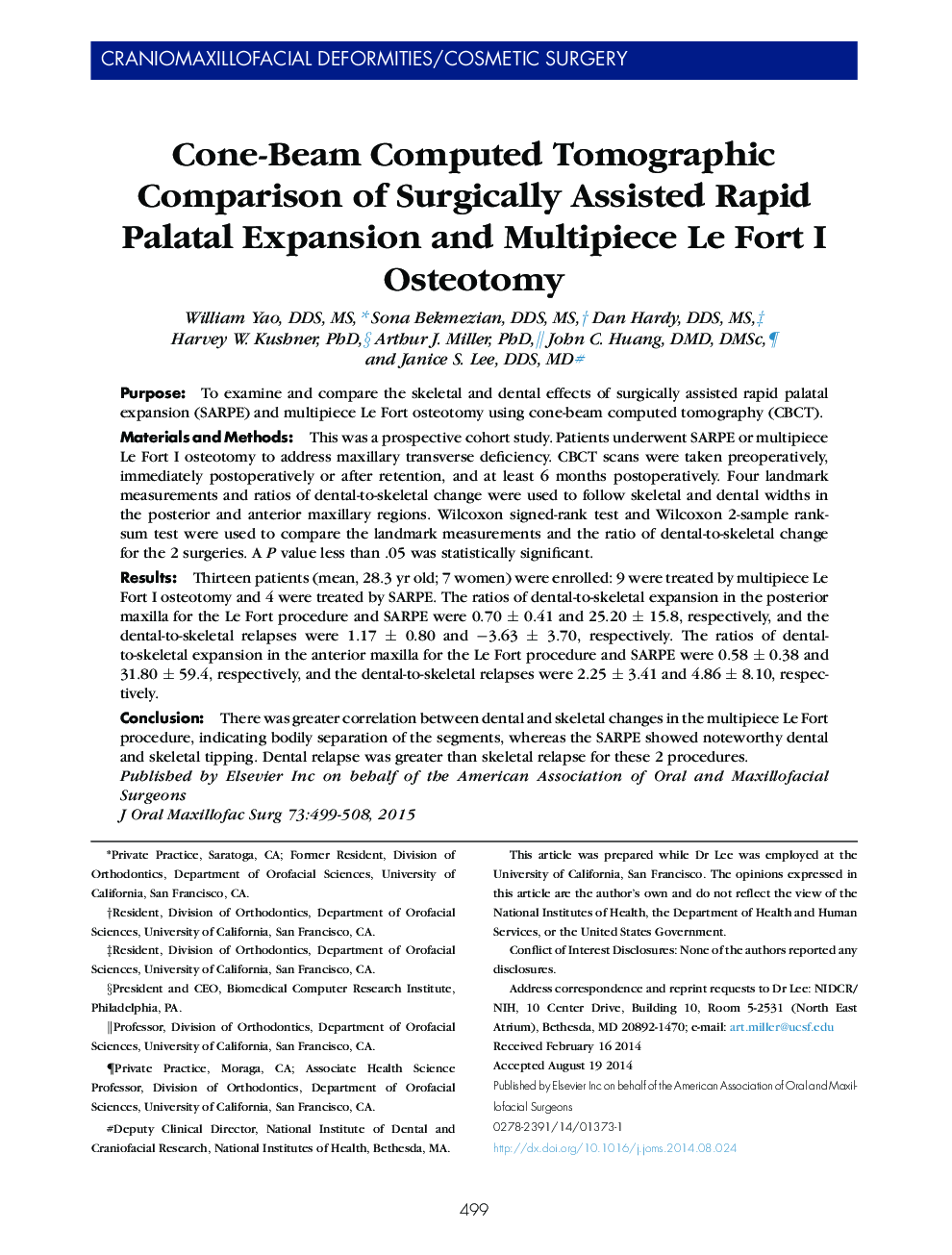| Article ID | Journal | Published Year | Pages | File Type |
|---|---|---|---|---|
| 3155966 | Journal of Oral and Maxillofacial Surgery | 2015 | 10 Pages |
PurposeTo examine and compare the skeletal and dental effects of surgically assisted rapid palatal expansion (SARPE) and multipiece Le Fort osteotomy using cone-beam computed tomography (CBCT).Materials and MethodsThis was a prospective cohort study. Patients underwent SARPE or multipiece Le Fort I osteotomy to address maxillary transverse deficiency. CBCT scans were taken preoperatively, immediately postoperatively or after retention, and at least 6 months postoperatively. Four landmark measurements and ratios of dental-to-skeletal change were used to follow skeletal and dental widths in the posterior and anterior maxillary regions. Wilcoxon signed-rank test and Wilcoxon 2-sample rank-sum test were used to compare the landmark measurements and the ratio of dental-to-skeletal change for the 2 surgeries. A P value less than .05 was statistically significant.ResultsThirteen patients (mean, 28.3 yr old; 7 women) were enrolled: 9 were treated by multipiece Le Fort I osteotomy and 4 were treated by SARPE. The ratios of dental-to-skeletal expansion in the posterior maxilla for the Le Fort procedure and SARPE were 0.70 ± 0.41 and 25.20 ± 15.8, respectively, and the dental-to-skeletal relapses were 1.17 ± 0.80 and −3.63 ± 3.70, respectively. The ratios of dental-to-skeletal expansion in the anterior maxilla for the Le Fort procedure and SARPE were 0.58 ± 0.38 and 31.80 ± 59.4, respectively, and the dental-to-skeletal relapses were 2.25 ± 3.41 and 4.86 ± 8.10, respectively.ConclusionThere was greater correlation between dental and skeletal changes in the multipiece Le Fort procedure, indicating bodily separation of the segments, whereas the SARPE showed noteworthy dental and skeletal tipping. Dental relapse was greater than skeletal relapse for these 2 procedures.
